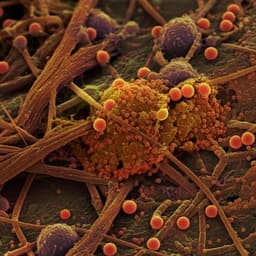
Environmental Studies and Forestry
Environmental and microbial controls on microbial necromass recycling, an important precursor for soil carbon stabilization
K. M. Buckeridge, K. E. Mason, et al.
This research, conducted by Kate M. Buckeridge and colleagues, reveals the intricate controls on microbial necromass recycling efficiency in UK grassland soils, shedding light on its impact on soil carbon stabilization amidst varying environmental conditions.
~3 min • Beginner • English
Related Publications
Explore these studies to deepen your understanding of the subject.







